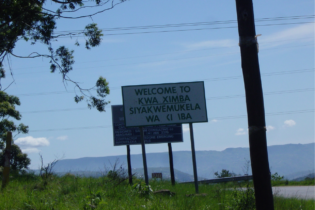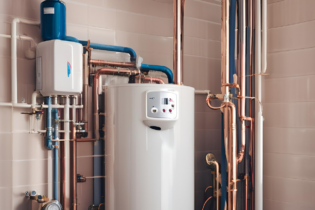eMalahleni, in the north-east of South Africa, is one of the fastest growing urban areas in the country. With more than half a million people living in a water-stressed region, the municipality has struggled to bring clean drinking water to the community.
The city is currently licensed to take 75 megalitres (Ml) of water a day from the local Witbank dam, but it needs to draw 120Ml. And by 2030, eMalahleni will be using an additional 60Ml a day – a 50% increase. eMalahleni is also a major coal mining area and acid mine drainage – where rising groundwater can become contaminated when it comes into contact with coal from operating and closed mines – is a problem. Too little water on the surface is a problem for communities and too much water underground and in open pits is no less of a problem for a mining company. Following a decade of research involving Anglo American, South Africa’s power utility, Eskom, and all of the major mining houses in the Highveld coalfields, a solution was found in 2007 when Anglo American, with BHP Billiton Energy Coal South Africa, built the eMalahleni Water Reclamation Plant (EWRP) the world’s first acid mine drainage water reclamation plant. The plant converts mine water into drinking water using a process of reverse osmosis desalination, similar to the technology that is applied in seawater desalination plants. Anglo American also developed the infrastructure needed to deliver the treated water directly into the municipality’s system, and have met the water needs of their own operations making them self sufficient. EWRP treats up to 30 million litres of water per day from our Landau, Greenside, and Kleinkopje collieries as well as BHP’s disused South Witbank mine. Some of this is used in our own mining operations, but the bulk of it supplies municipality’s daily water needs. It means more than 80 000 people in the surrounding communities now have clean drinking water, helping the municipality meet one of its Millennium Development Goals – to ensure that no household goes without a potable, reliable water supply. The plant is currently being expanded to 60 Ml/day and should be commissioned at the beginning of 2014.The success of the project is not just measured in fresh water. During construction, almost 700 temporary jobs were created and there are now 57 permanent employees – almost all of whom are from the local community. Anglo American’s enterprise development initiative, Zimele supports a water bottling business at the site, creating jobs for a further nine people.
To meet its aim to be a zero waste facility, the plant has found an innovative use for 200 tonnes of gypsum-based solids, which is a daily by-product of the water reclamation process. So far, 66 affordable homes have been built with gypsum bricks for Anglo American employees and there are plans for 300 more. The houses, built by local contractors, have made it possible for employees to move away from mine villages to enjoy long term home ownership. Some gypsum is also being sold into the agricultural industry as a soil ameliorant. Internationally, eMalahleni is considered the benchmark for best practice in the response to acid mine drainage. Dr Anthony Turton, Environmental Advisor and South African Environmentalist of the Year 2010, describes the plant as the “blueprint of excellence in the treatment of acid mind drainage and the best of breed in South Africa and in setting global standards for mining in a water-constrained environment”. Anglo American is sharing the considerable know-how that has been developed as a result of this project. It has been asked to provide input to the South African government’s national desalination strategy and is one of seven private companies that are members of Department of Water Affair’s Strategic Water Partnership Network. The project is replicable and is being examined by six of Anglo American’s ten Thermal Coal operations. It has already been replicated by a private mining company, Optimum Coal Holdings, who commissioned a 15Ml a day plant in June 2010 to the east of eMalahleni. Four other projects in the Witbank coalfields are in various stages of project development based on the same model as the eMalahleni plant. Mines, other than coal, are also looking to replicate this model. The plant will continue to operate beyond the life of mines to manage environmental needs over the long-term in a sustainable way and make drinking water available to the local community into the future. “I do not think anyone could have imagined that when we embarked on this project, it would have had the impact that it has,” says Peter Gunther, former head of the EWRP and now sustainable development manager for Anglo American’s other mining and industrial business unit. “We are moving beyond seeking solutions purely for our own mines. What we are after is a holistic way of dealing with the water problems of the entire region.” Source: guardian.co.uk






